I never thought of myself as a teacher that would use graphic novels in their classroom. But each passing year, I find myself more drawn to recommending them to my students, using them in my classroom, and begging other teachers to do the same.
I definitely wasn’t the comic book reader growing up (I preferred my Batman on Saturday morning cartoons) and graphic novels hadn’t yet become the juggernaut that it is today. So it wasn’t until I started teaching students that loved comics and graphic novels that I started using them myself. They were the ones that got me comfortable with the genre and taught me how to use them.
So, I would be remiss if I didn’t begin this article with a quote by one of my most enthusiastic graphic novel readers. I asked him, why more teachers should use comics in their classrooms?”
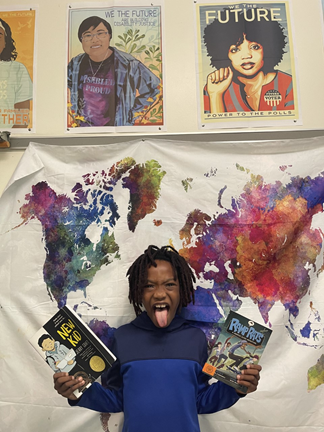
His response was, “There is nothing more epic than comics! The writers and artists know how to make a story come to life in a way that regular books just don’t. The illustrations are the best part.”
In my experience, there are 4 key strategies and best practices for using graphic novels in the classroom that my students and I swear by.
Reading Panels and Speech Bubble
This is a great resource for teaching your students to read graphic novels; How to Read Panels and Speech Bubbles
The first thing to do with your students is to pull up a snapshot of a graphic novel and, after teaching essential vocabulary, work together to create an anchor chart that labels the different components of graphic novels.
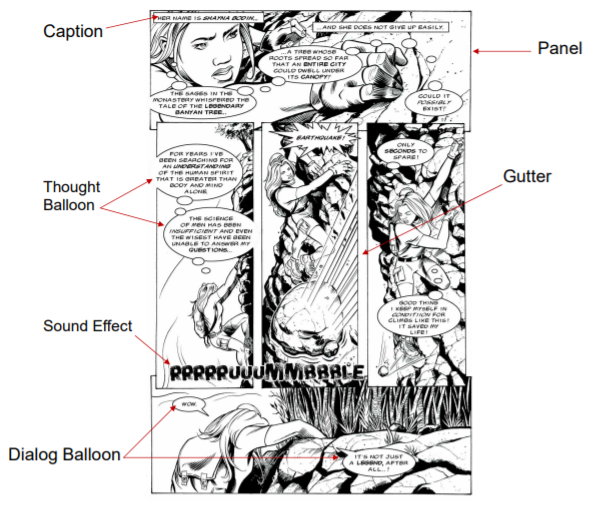
After students began feeling comfortable with the vocabulary and elements of the graphic novel, I passed copies of pages from different graphic novels that we had in our library and had students label them on their own to show their understanding.
Next, teaching students how to read speech bubbles will make your students feel confident with this new genre. Remind them it’s not much different than your traditional novel. Here’s an example from the above-mentioned resource.
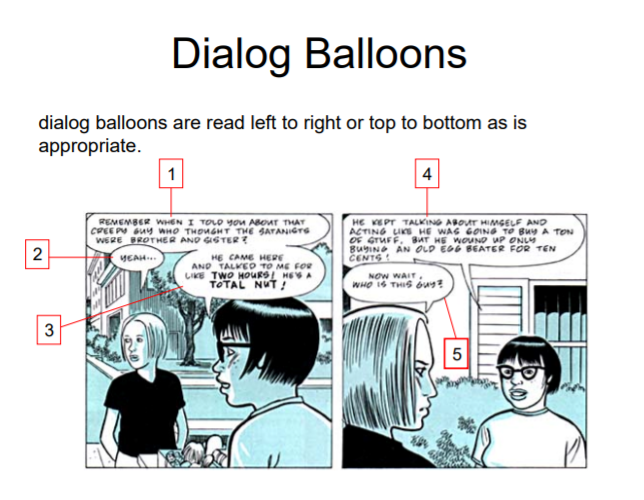
Afterwards, read together as a class! Allow your students to read aloud so that you can monitor their fluency and comfort with reading “differently”. Choose your favorite read aloud technique and have fun!
Finding the Right Texts
Much to my surprise, there are graphic novels that deal with a host of different themes and subjects, not just superheroes and villains. Here are a few things to keep in mind when choosing texts for your classroom:
- Ask students what titles they already love. Having these comfort texts on hand will allow them to share their passion for reading with other students. Allow them to lead a Book Talk (more on that below)!
- Look for graphic novels that reflect your students’ lives and experiences. Like traditional books, graphic novels should be windows and mirrors for students. Here’s a list of some of the best diverse graphic novels out right now.
- Need a new take on a traditional curriculum topic? Graphic novels will hook you up! Many popular titles are now available in graphic novel format. Here are some great examples.
My ultimate recommendation is to spend a lazy Saturday morning reading up about different graphic novels online or hitting the shelves of your local library or bookstore. Enjoy the research process!
Analyze the Visuals
Graphic novels truly do contain some stunning visuals. Illustrators expertly reinforce written imagery helping students visualize what they are reading.
When analyzing art in graphic novels, I tend to focus on the intersection between art and character emotions. So I ask my students, “How does the illustrator portray or show the characters emotions?” Then, students pick apart all the details to support their answer.
Here is an example that I have used in class this year!
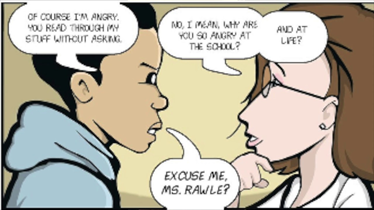
From New Kid by Jerry Craft
This can be an opportunity for class discussion or writing that asks students to cite evidence from the text to support their claims.
If you’d like even more strategies for analyzing graphic novel illustrations, check out another article I wrote Reading Comprehension and Video: 4 Essential Strategies for Teaching Kids to be Strong Readers of Visual Media
Book Talks
Book Talks are short presentations created by students with the goal to get others to read the recommended book. Book Talks are one of my favorite reading and community building activities and easily replace the old school book report. They allow students to become the teachers and talk about the books that they love the most. Book Talks also allow students to be creative in the way that they choose to present.
This is a powerful strategy to implement at the beginning of a unit or at the beginning of the year when you are introducing students to your classroom library!
Lots of people think that Book Talks have to be extravagant or cost money to transform your classroom into Hogwarts, but it doesn’t have to be. Whether you give students a template for their book talk (like the one below) or decide to go all out and make over your room into a Starbucks so students can taste different reads, you’re not wrong.
Personally, I like to give my students a format or template to use for their Book Talks so they know what they should talk about. Here is mine that I’m using this year.
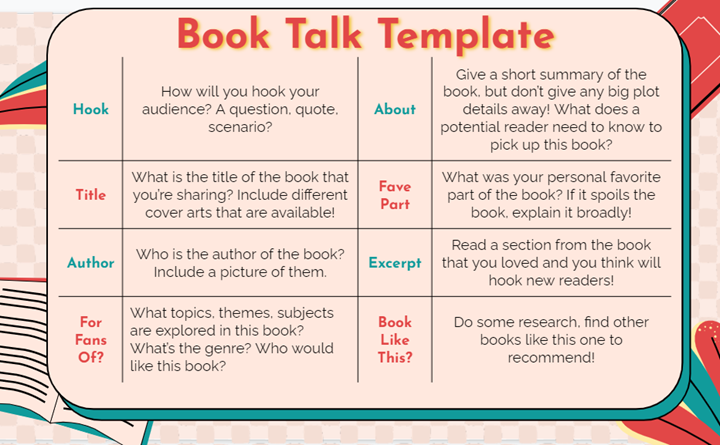
How they choose to present this information is up to them. For this upcoming round of book talks in my class, students have created Google Slides, made posters, and recorded Tik Tok’s (in the style of other Book Tok’s. To read more about how Tik Tok is saving the book industry, read this article!).
To add some extra incentive we have a competition going to see who can get the most people to read their book based on their recommendation.
So, when you’re about to use graphic novels in your classroom, start with a book talk! Think about how you can inspire your students to pick one up through your presentation. Then, challenge them to do the same!
Check out this resource from WeHaveKids to gain some more inspiration for your book talks! You can also check out my colleague David’s article on how to prepare students to share their ideas in class.
Starting Your Next Great Reading Adventure
So whether you’re a graphic novel connoisseur or a reformed skeptic like me, get some graphic novels in your classroom! Your kids will love them and now you’re equipped with some strategies and best practices to get you started!
Grab a lunch bunch next week and brainstorm with your most powerful assets, your students! Make a list of graphic novels they’d like to read and pick their brain about how you could implement them in your classroom. Have fun!
If you’re a fan of the genre or have other great ideas and best practices, please comment below! Together, we can work together to make our classes the best place to read!



